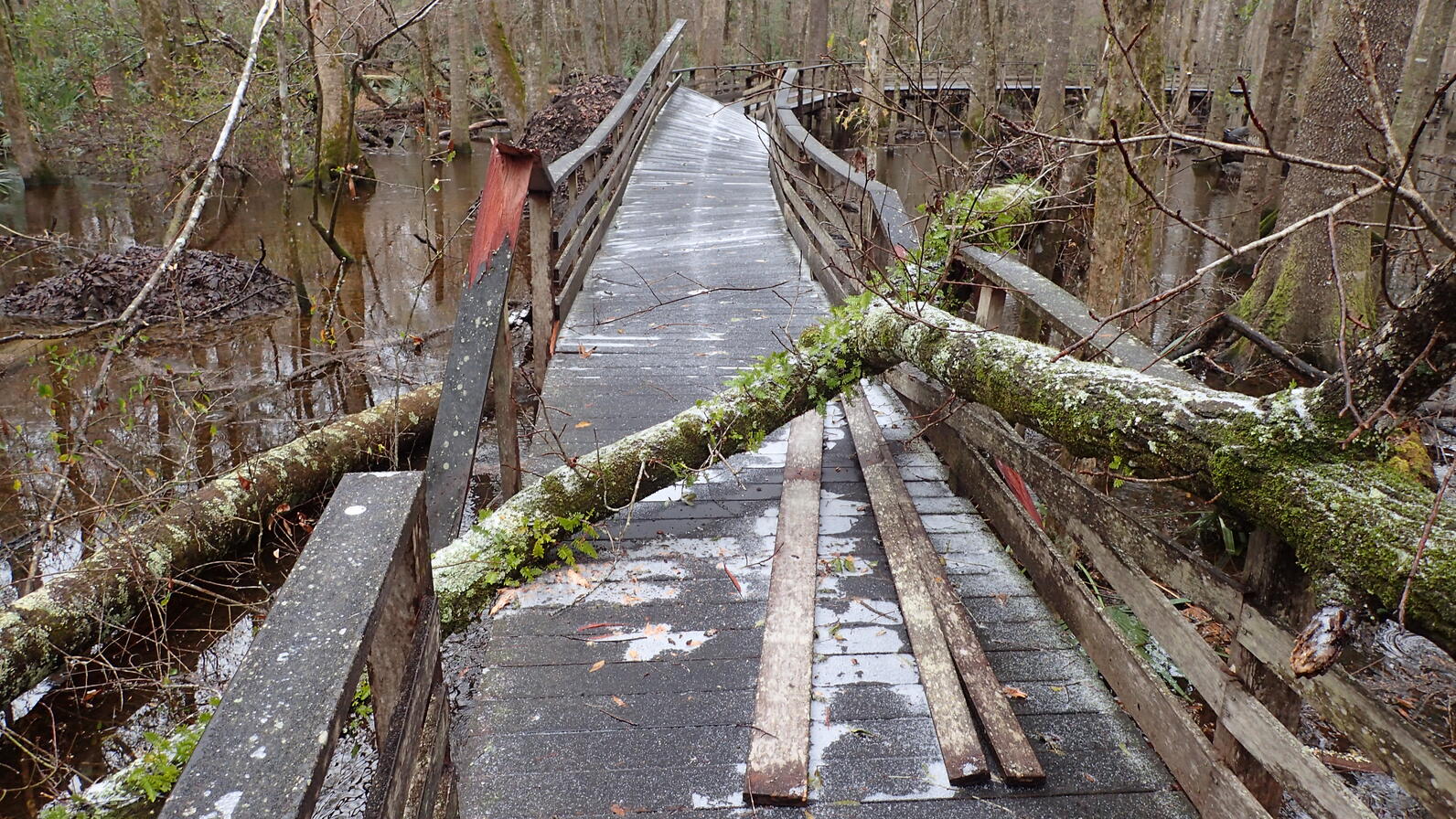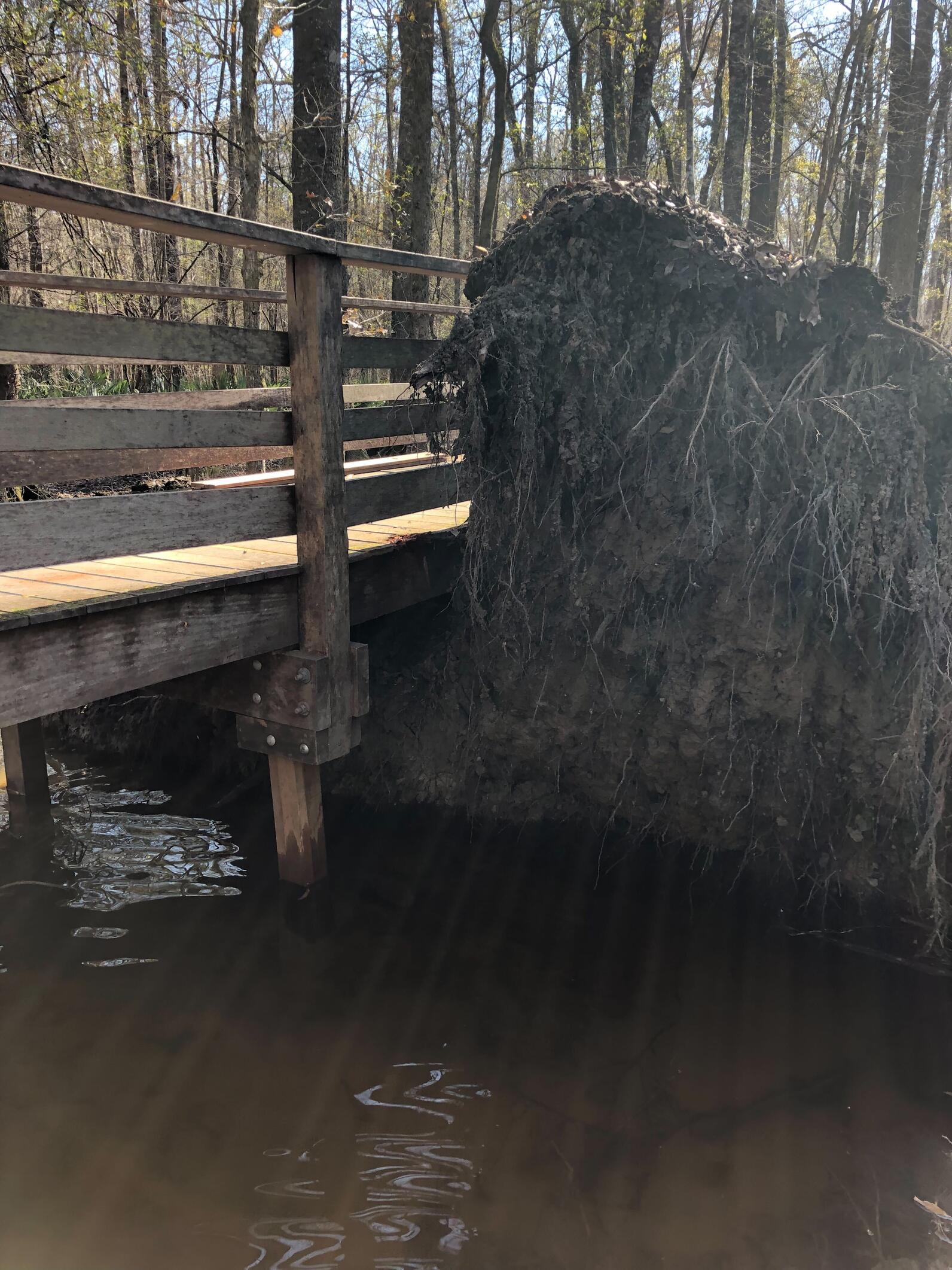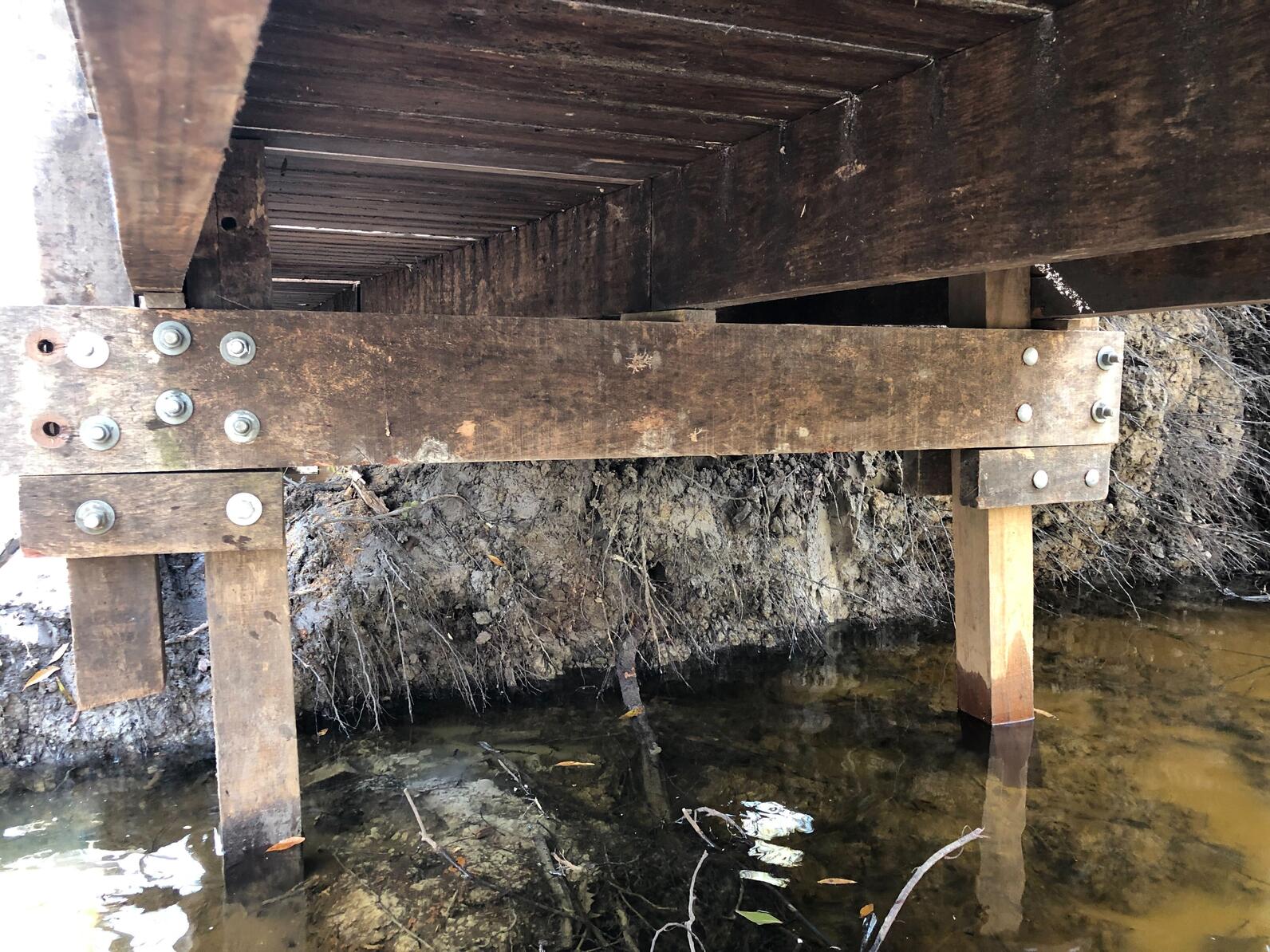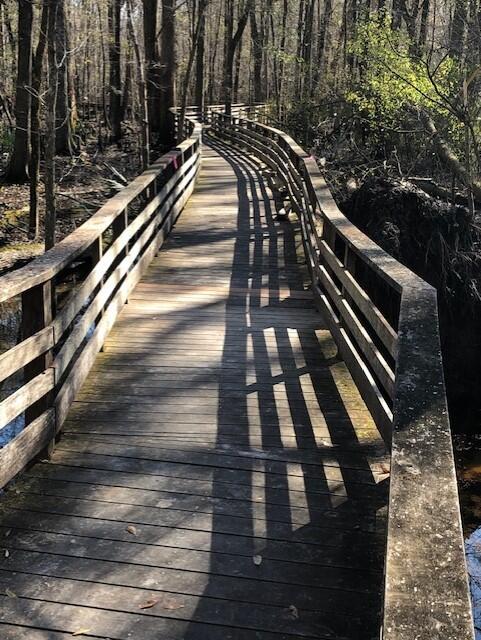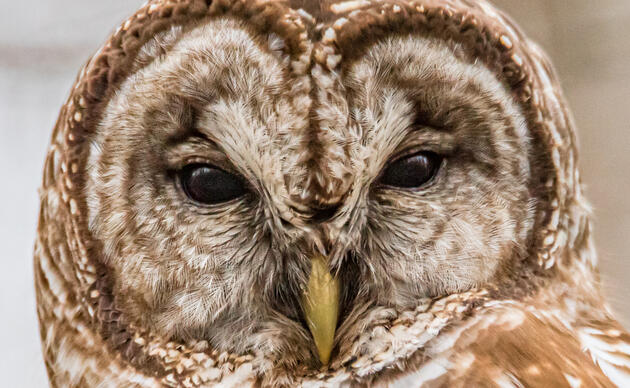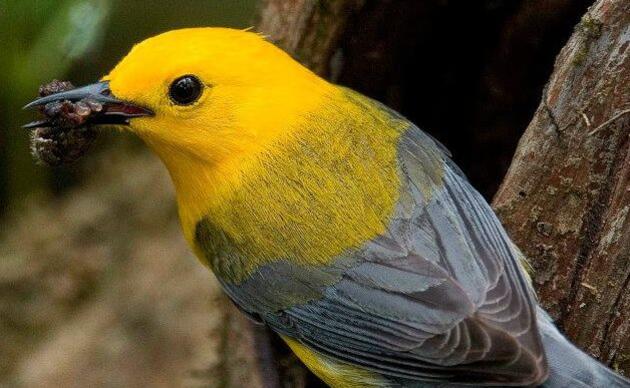In January of 2022 a winter storm caused very significant damage to the boardwalk at Beidler Forest. The damage was a combination of breaks resulting from falling limbs that was so significant that it took three Beidler staff more than four days to fix! The boardwalk at Beidler is the “time machine” that allows visitors to access the old-growth swamp, but it does take quite a bit of time and money to maintain. We hope you’ll consider pitching in to help us maintain this important access path for Beidler Forest. Buy a boardwalk board today with a gift of $50 dollars (our estimated cost for each board replaced).
This break is similar to what happened in 2016 during Hurricane Matthew, but was even more difficult to fix. Hurricane Matthew came barreling up the coast of South Carolina with wind gusts of 80 to 100 miles per hour, toppling trees and filling the swamp. The result was multiple breaks to the boardwalk from falling trees and branches, as well as portions of the boardwalk completely unearthed by uprooted trees. Damage from Matthew can still be seen in the form of old trees laying on the ground, their root balls now supporting stalks of yellow-flowered Butterweed and red-stemmed Pokeweed above the waters of the swamp.

Modular (re)construction
Luckily, at least from a repair perspective, the boardwalk is not monolithic. It is actually an assemblage of some 20,000 Cumaru boards and untold stainless-steel screws comprising almost a thousand, twelve-foot segments supported by heavy trusses along its length. So when a break like this occurs, it’s not the entire boardwalk that needs repair, just the damaged segments.
Cold weather and deep water hindered repairs to this break, but using some of the Cumaru repair material held in storage and four days of work by Land Management staff Mark Musselman, Rick Armstrong and Tim Evans (as well as some welcomed advice from former center director Mike Dawson), everything was back like new. After the repair was complete, Mike mentioned that it was among the worst breaks that he’d experienced since Hurricane Hugo in 1989!
Well, everything was like new except our supply of repair materials. Every repair requires wood, screws, tools and time, all of which get more expensive every year. If you enjoy the boardwalk and would like to contribute to its upkeep and maintenance, please take a minute and make a contribution by "Buying a Board" (or a few) for $50.00 so that visitors can enjoy this unique experience for years to come.
The Continuation of a Legacy
The boardwalk might seem like it has been around forever, but in fact what we walk on today is actually the second boardwalk to occupy the swamp. The first was built in 1977 using treated pine lumber. There are some pieces of it still visible as you approach the meeting tree, these have become favorite hangouts for cottonmouths and other snakes basking in the sun. The current boardwalk was constructed in 2014 using a tropical hardwood known as Cumaru. The benefits of sustainably sourced Cumaru are that it is dense, it won’t float out of the ground in a flood, it is naturally rot-, insect- and decay-resistant, no need for harmful chemical treatments, and it is long lasting. The boardwalk as it exists today should, barring any extreme weather events, last another thirty years or more.
Let’s face it, without the boardwalk few visitors to the swamp would be doing much wandering. Mud, water, downed logs and dense palmetto stands all serve as barriers to keep people out of the swamp. The freedom seekers that sought refuge deep in its confines so many years ago knew that well. But today, our goal is to bring visitors into the swamp and the boardwalk provides a safe and accessible way for that to happen.
The boardwalk also provides a sense of security to the wildlife in the swamp. From deer to armadillos and otters to bobcats, the wildlife living within the sanctuary have learned that visitors to the swamp travel along the boardwalk – talking, pushing strollers, snapping pictures – but never venturing from its surface. As a result, wildlife will come very near the boardwalk to feed, swim, rest, or even people watch!
The boardwalk at the Francis Beidler Forest Center and Sanctuary is the heart of what we stand for at Audubon South Carolina. It offers an all-access pass to step back in time, to spend a few hours outdoors in a landscape that hasn’t changed in more than a thousand years. Preservation of the ancient forest that the boardwalk meanders through, some 1,800 acres of virgin cypress-tupelo swamp, was the driving force behind the acquisition of some 18,000 acres we know as Beidler Forest today.
